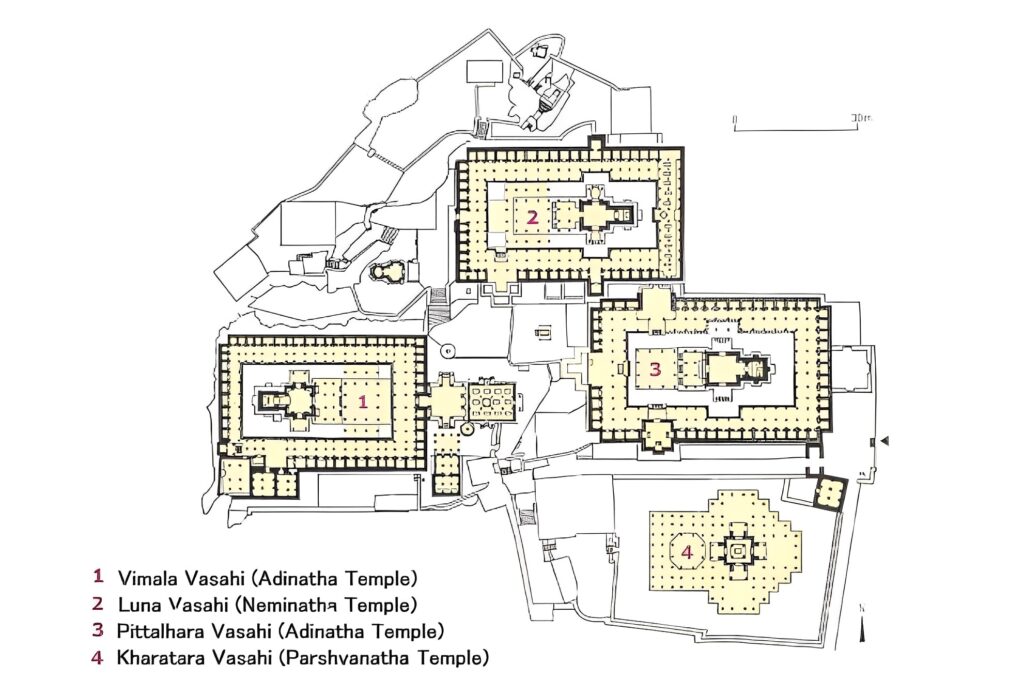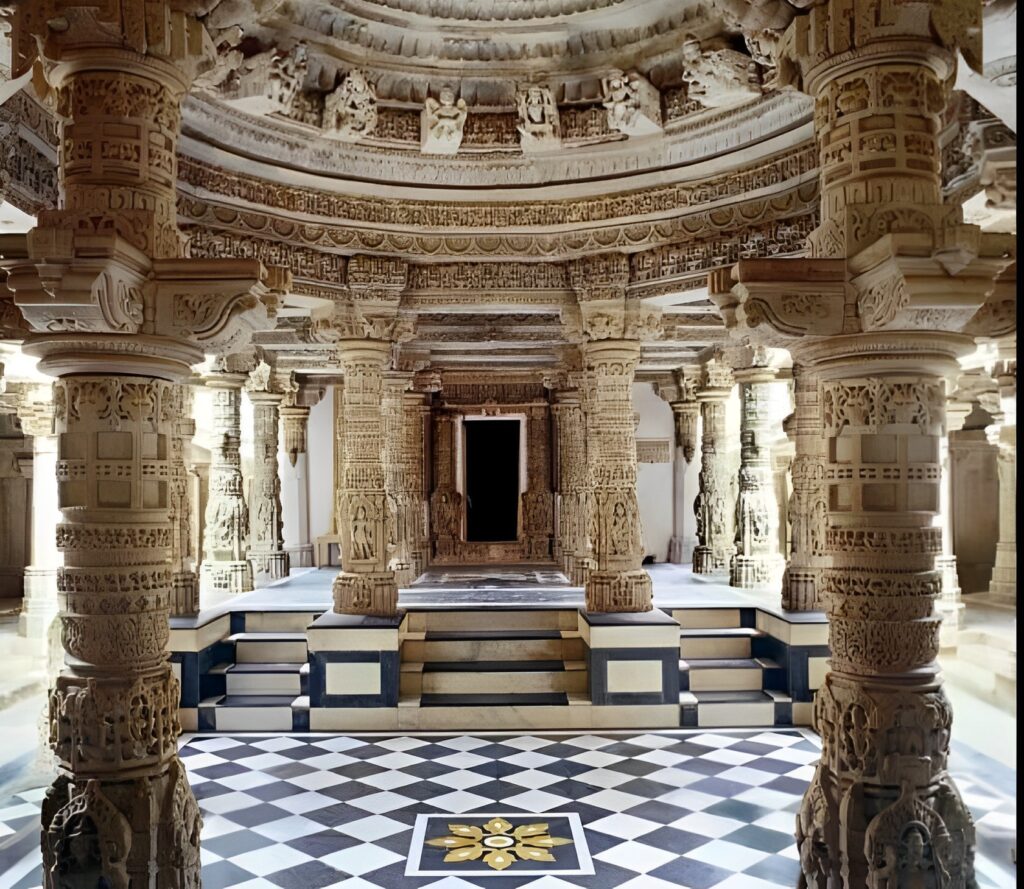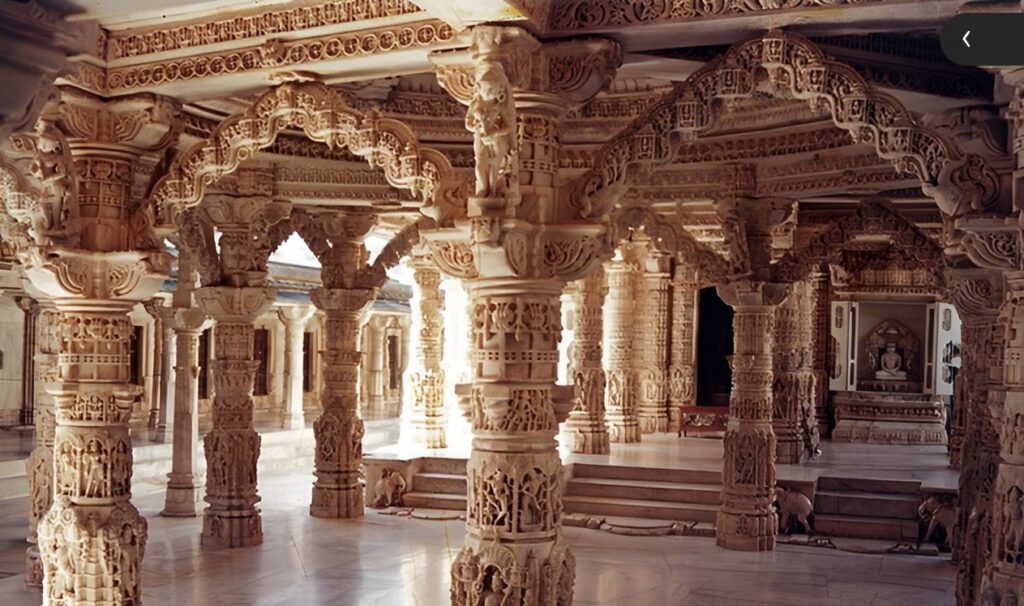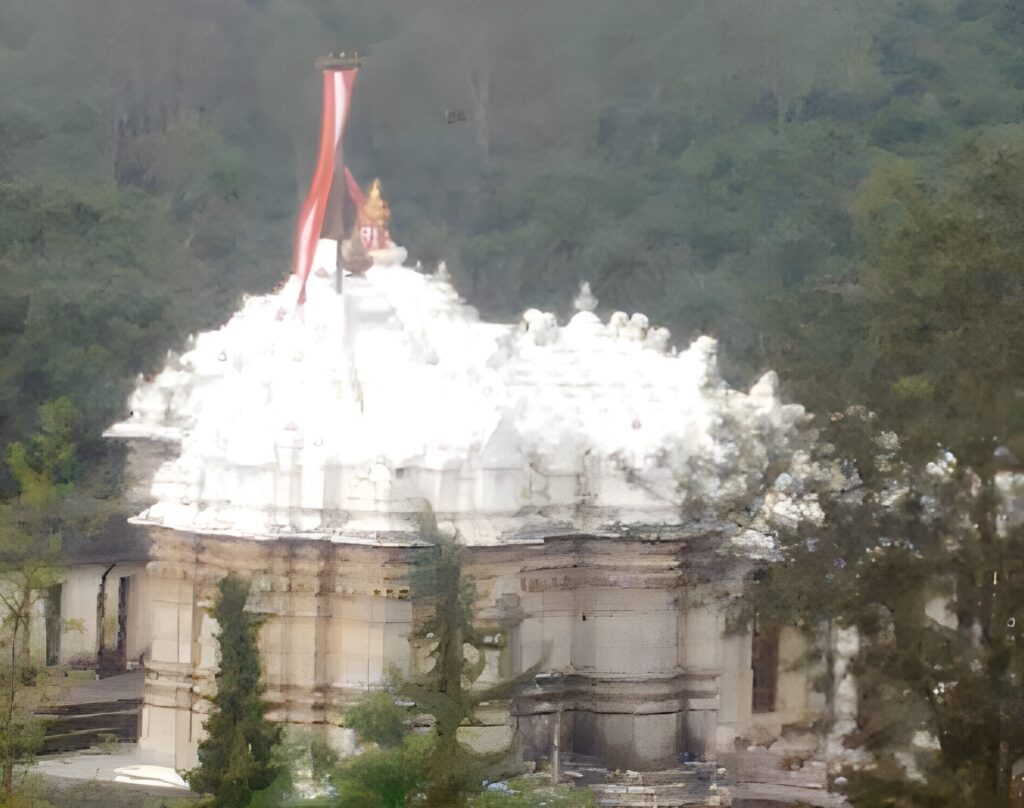Introduction
White marble has always fascinated the human mind from time immemorial. The superior shine and exuberant cost have always had the characteristic of exclusivity that not everybody can afford. Consider the Taj Mahal, a stunning piece of architecture on the banks of the Yamuna. In India, there are many more monuments that have significant historical significance, but people don’t have knowledge about them. The perfect example is Dilwara Temple in Mount Abu, Rajasthan. The temple is a collection of five temples devoted to five Trithankars of the Jain community.
It was built by various kings between the 11th and 15th centuries. All five temples are contained within a single, high-walled compound in Mount Abu’s forest hills. It was remarkable that the temple was built without the use of a road, and that all of the marble was transported 1200 meters on an elephant back from Arasoori Hill to Ambaji. Intricate carving and design on marble—the more we say, the less it is.

The layout of Dilwara Temple
The temple is named after the nearby village of Dilwara or Delvara. Dilwara temple is a group of 5 temples that are numbered according to the timeline
1) Vimal Vashai Temple:
Devoted to: 1st Jain Tirthankara, Shri Adinatha.
Built by: 1026 by Vimal Shah, a minister of Bhima I, the Chaulukya king of Gujarat.
2) Luna Vasahi temple
Devoted to: 22nd Jain Tirthankara, Shri Shri Neminatha
Built by: 1230 by two Porwad brothers – Vastupal and Tejpal – both ministers of a Virdhaval, the Vaghela ruler of Gujarat.
3) Pittalhar temple
Devoted to: 1st Jain Tirthankar, Shri Adinatha Bhima Shah,
Built by: a minister of Sultan Begada of Ahmedabad, between 1316-1432 AD Sangvi Mandlik and his family in 1458–59.
4) Parshvanath temple
Devoted to: 23rd Jain Tirthankara, Shri Parshvanatha.
Built by: Sangvi Mandlik and his family in 1458–59.
5) Mahavir Swami temple
Devoted to: 24th Jain Tirthankara, Shri Mahavir Swami.
Built by: a small structure constructed in 1582.

Vimal Shahi Temple
The oldest of the five temples is dedicated to the first Tirthankar, Shi Adinatha or Rishabdeva. An open courtyard surrounded by corridors houses idols of a number of Tirthankars. Guda Mandapa, the main shrine, has the idol of Trithankar Rishabadev. The walls are beautifully intricate with designs of flowers, petals, etc. On the pillars, females are playing musical instruments. This art was built in four years by 1200 laborers and 1500 masons.

Shri Neminath Ji or Luna Vasahi Temple:
Here, Rang Mandapa Hall houses a beautiful chemistry between Thirthakankar and monks. A circular band having 72 monks in the sitting posture of Tirthankar, followed by 360 monks in the circular band below, is just beautiful to watch. Rang Mandapa House, Shri Neminath Ji’s black mark idol.

Shri Rishabdaoji Temple or Peethalhar Temple
The temple is called Pittalhari or Peethalhar because of the extensive use of brass metaI has Gudumandapa and Navachowki, as do other temples, but the rang mandapa and corridors were left unfinished.
tallest among all the temples. It’s a three-story building housing four big mandaps. Dedicated to Lord Parsavnath The front iconography of the Chaumukha idol on the first level is of Chintamani Parshvanath, Magalakar Parshvanath, and Kalpadruma Parshvanath, all with hoods of nine cobras. The picture in Parshvanatha’s fourth image is unreadable. There are pictures of 17 Tirthankaras and floral paintings throughout the hallway. There is a portrayal of 14 nightmares that the mothers of the Tirthankars experienced before their births.
Shri Mahaveer Swami Temple
The detailed carving of pigeons, elephants, horses, etc. leaves one spellbound by the art. The Mahavira is surrounded by three idols that grab the attention of the visitor. A rectangular marble slab with a triangular stone atop it, located outside the shrine, has 133 representations of the Tirthankar in miniature, with a bigger image in the center.
Jirnoddhar (Repairs)
Temples were attacked by Alauddin Khilji in 1321, so it’s no surprise that they require maintenance from time to time. Under the direction of Yati Hemasagar, Lallubhai Jaichand of Patan had the temples rebuilt and reconsecrated on April 25, 1906. Anandji Kalyanji once more undertook extensive repairs between 1950 and 1965, hiring the Sompura company Amritlal Mulshankar Trivedi to complete the job.
Timing of Dilwara Temple
Opening Time: 12:00 PM to 05:00 PM
Open: Daily (Even on public holidays)
No time restriction for Jain’s
How to reach Dilwara Temple
Dilware temple is 2.5 km from mount abu road that is well connected to major cities of Rajasthan
The nearest railway station is Abu Road 29km away.
The nearest airport is Udaipur (185km).
